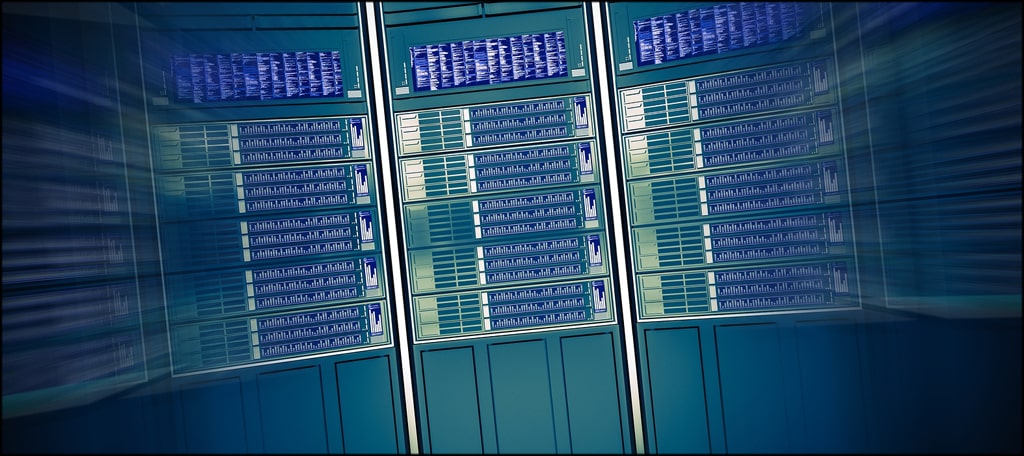Is your website slowing to a crawl? It could be due to increased traffic or poor shared server performance. Whatever the cause, how do you know when it’s time to set up a dedicated server?
A decline in performance is the most common sign that a move to a dedicated server would benefit your site. An increase in traffic may cause that performance decline, but traffic isn’t the only thing that can slow down a site.
Slowdowns are also typical on improperly managed shared hosting platforms, where another site unrelated to yours can cause problems for you.
Shared Hosting Can Be Great
I don’t want to give the impression that all shared hosting can lead to performance problems, because that’s certainly not true. But low-quality shared hosting can cause performance issues for websites.
Such problems often arise when you use a host that is inexperienced, sloppy, or doesn’t care about its customers.
But when it’s done right, high-quality shared hosting is an excellent home for the majority of websites. Most of us don’t need to accommodate millions of daily visitors, and shared hosting makes operating our sites affordable.
A VPS Can Be Better Than Shared Hosting

If you use a good host but you’ve outgrown shared hosting, a dedicated server isn’t your only option. Most sites experiencing growth first move to a Virtual Private Server or VPS.
A VPS is just what the name implies, a virtual web server. A VPS provides many of the benefits of a dedicated server at a lower cost. Several virtual servers can run on each piece of hardware, which allows for more economical pricing than a dedicated server.
However, a VPS doesn’t offer the same level of control that a dedicated server provides. And, though your server is isolated from others on the hardware, you’re still sharing resources with other VPS instances.
If you want to increase security or do more elaborate configuration, it isn’t always possible on a VPS. You can also run into IP blacklisting problems caused by other domains on the VPS.
Finally, most VPS have resource limitations, so in some cases, file storage can become an issue.
Nothing Beats a Dedicated Server
A dedicated server is all yours. No one else’s sites or services run on the hardware. That means no problems caused by “neighbors.” If you want to beef up website security, a dedicated hosting service is the only way to go.
If you want complete freedom to choose your operating system, you need a dedicated server. If you want full control of your website hosting environment, only a dedicated server can provide it.
All Dedicated Servers Are Not Created Equal

Recognizing that your site would benefit by moving to a dedicated server is the first step. The next is deciding which kind of dedicated server hosting you need. The first choice you’ll have to make is between managed or unmanaged.
Managed dedicated servers are set up and maintained (and often backed up and DDoS protected) by the hosting company. If server maintenance, updates, and security aren’t in your wheelhouse, a managed server is for you.
Managed dedicated servers don’t usually offer the same freedom when it comes to the selection of an operating system or certain server software. So your choices will be limited to what the host supports.
With an unmanaged dedicated server, you take care of set up, maintenance, and security. You get an empty server (sometimes called “bare metal”), and it’s up to you to decide how to use it. This means more responsibility, but it also means more freedom.
If a managed dedicated server is a Ferrari, an unmanaged dedicated server is the keys to the Ferrari assembly plant.
How to Set Up a Dedicated Server
Since you’re free to do whatever you’d like with a dedicated server, there isn’t one prescribed path to a successful setup. You may not be running a web server. Perhaps it’s a database server, or a file or backup server.
That being said, every server needs certain things. If you are setting up a web server, let’s take a look at a list of what you might use.
- An operating system
- DNS software
- An SSH shell
- An FTP shell
- Database management system (DBMS)
- An email server
- Statistics program
- Backup software
- Server monitoring software
- DDoS protection
Operating system
At the risk of starting a holy war, I will decline to suggest an operating system for your server. 😉 If you think people are contentious when it comes to Mac vs. PC or iPhone vs. Android, let me tell you, the Linux factions are much more invested in their fight.
Suffice it to say, pretty much every web server OS that doesn’t come from Microsoft has its roots in an old OS called UNIX (your Mac runs on a version of UNIX). UNIX gave birth to Linux, and now here we all are. Pick your poison.
Spoiler alert: all operating systems do essentially the same things.
DNS software
Linux usually includes BIND. BIND works, but it’s very old, which is a concern for some people. Popular alternatives to BIND are TinyDNS and PowerDNS.
SSH
Most Linux distributions include an SSH shell. There aren’t a lot of replacements for what comes with Linux. Maybe because there isn’t much need for a replacement.
FTP
Most Linux distributions include an FTP shell, but most Linux admins install vsftpd. From a security standpoint, vsftpd is an improvement over the standard ftpd because it does not run as root.
Database management system (DBMS)
MySQL was king of open-source DBMS for a long time. But since the sale of MySQL to Oracle, MariaDB (a fork of MySQL) has become a favorite. MongoDB and PostgreSQL are also very popular.
Email server
Linux includes mail sending and receiving programs like SendMail, but a lot of people install email servers like Exim or PostFix. Mail is one of those things that is pretty simple and hasn’t changed much in the past 30 years, so any server you use will do the job.
Statistics program
Sophisticated statistics programs to analyze web server logs can be very expensive. But check out Webalizer and AWStats, two popular open-source solutions that have been around forever.
Backup software
You can custom-build a solution that backs up to cloud storage or use a cloud service to automatically transfer files. Companies like Carbonite or Backblaze can perform full server backups. Just be sure your backups are not stored on your dedicated server.
Server monitoring software
You’ll need a dashboard that shows server status and resource use. Nagios is free and widely used by dedicated server users and large companies alike. It can alert you to problems and show trends over time.
DDoS protection
DDoS protection isn’t something you’ll be able to configure or provide for yourself. I include it here because any mission-critical website that can’t afford to go down needs DDoS protection.
Cloudflare is probably the best known CDN/DNS/DDoS protection provider, but there are many to choose from. Shop around for a plan that suits your needs.
Make Your Life Easier When You Set Up a Dedicated Server
While more often associated with VPS, cPanel, and Web Host Manager (WHM) can be helpful tools for a dedicated server. cPanel works with Linux and can set up domains and subdomains, create sites, databases, email accounts, site statistics, etc.
WHM is kind of the back end for cPanel. In WHM, you can access your domain DNS zones, install SSL certificates, set up cPanel accounts, etc. It also monitors server status and resource usage.
cPanel and WHM are typically used to set up web hosting businesses, so again, they aren’t often used on dedicated servers. But to me, a tool is a tool. If you think cPanel and WHM would make your life easier, that’s all you need to know.
Dedicated Servers Use a Lot of Natural Resources
Regardless of what kind of server you’re using, electricity is needed to run the system. That includes the power to the server itself, but also the cooling system (typically massive air conditioner systems that run 24 hours a day). Needless to say, a lot of energy is required to operate the web.
We are GreenGeeks, so if server resource use is a concern for you, you’re in the right place. We match every kilowatt of power used by our dedicated servers with three times the amount in the form of renewable energy via the Bonneville Environmental Foundation (the same applies to all of our hosting plans). No other dedicated server provider can come close to that.


I found this article very helpful. Thanks for sharing this informative post with us.